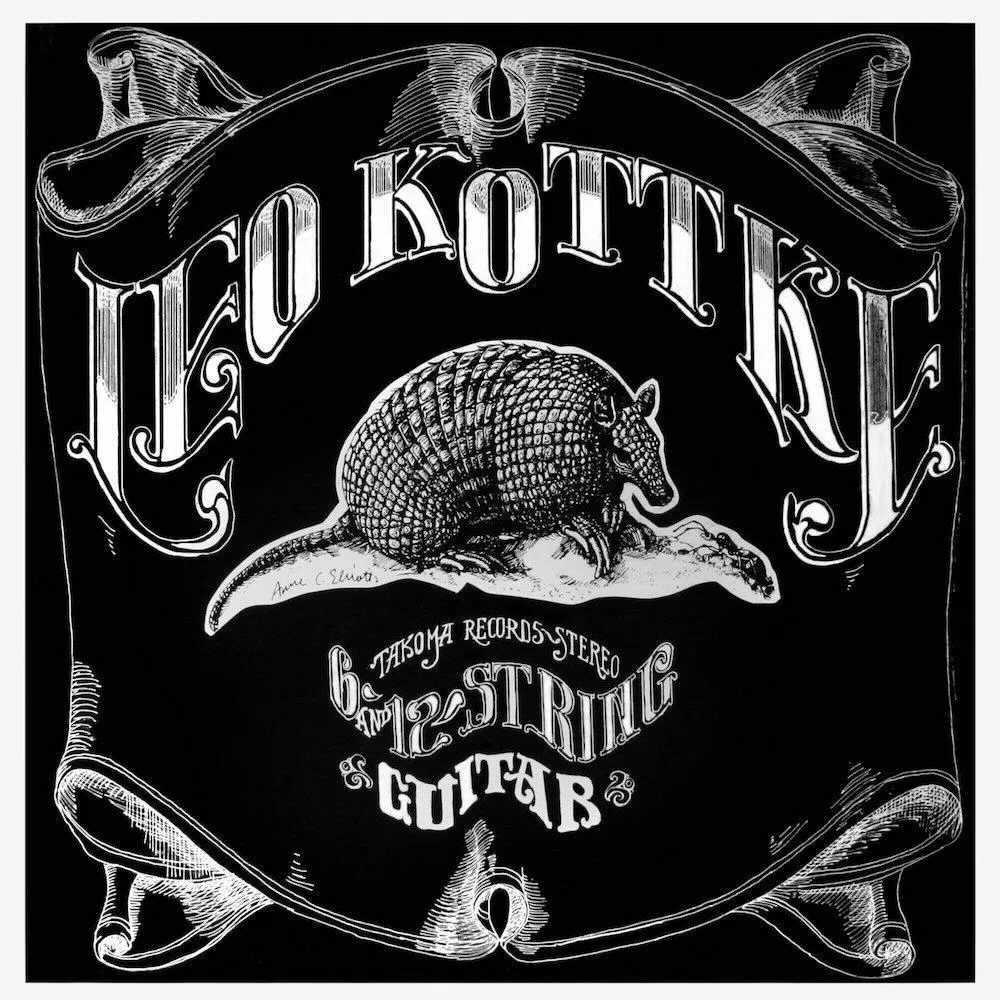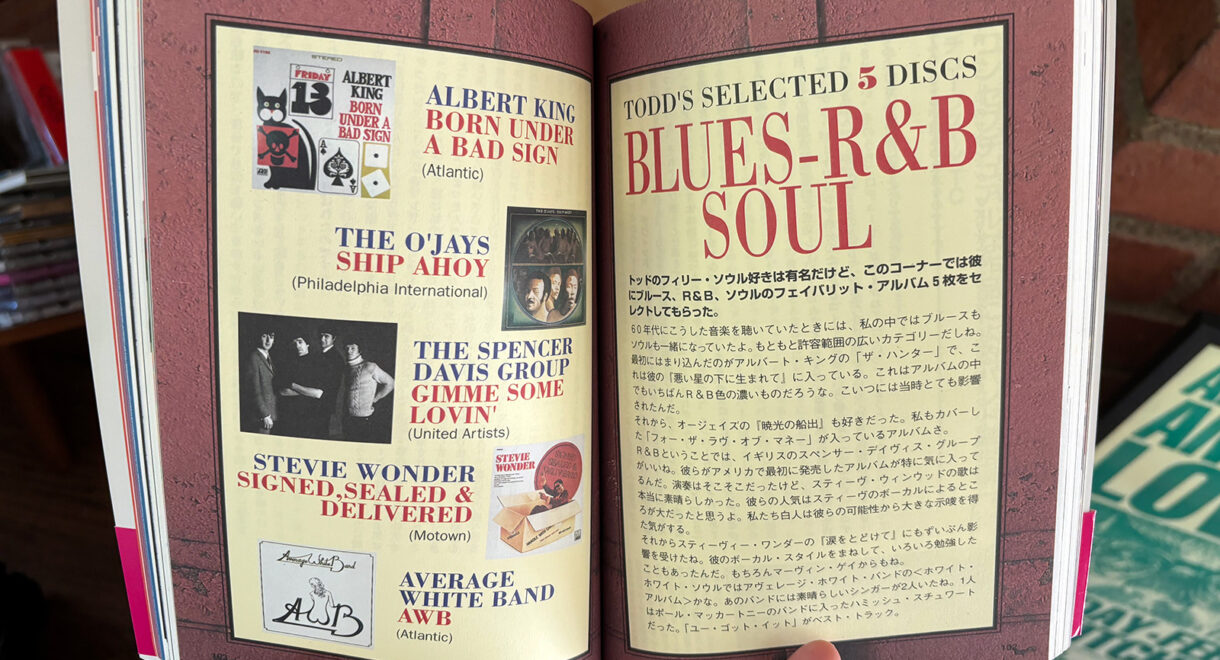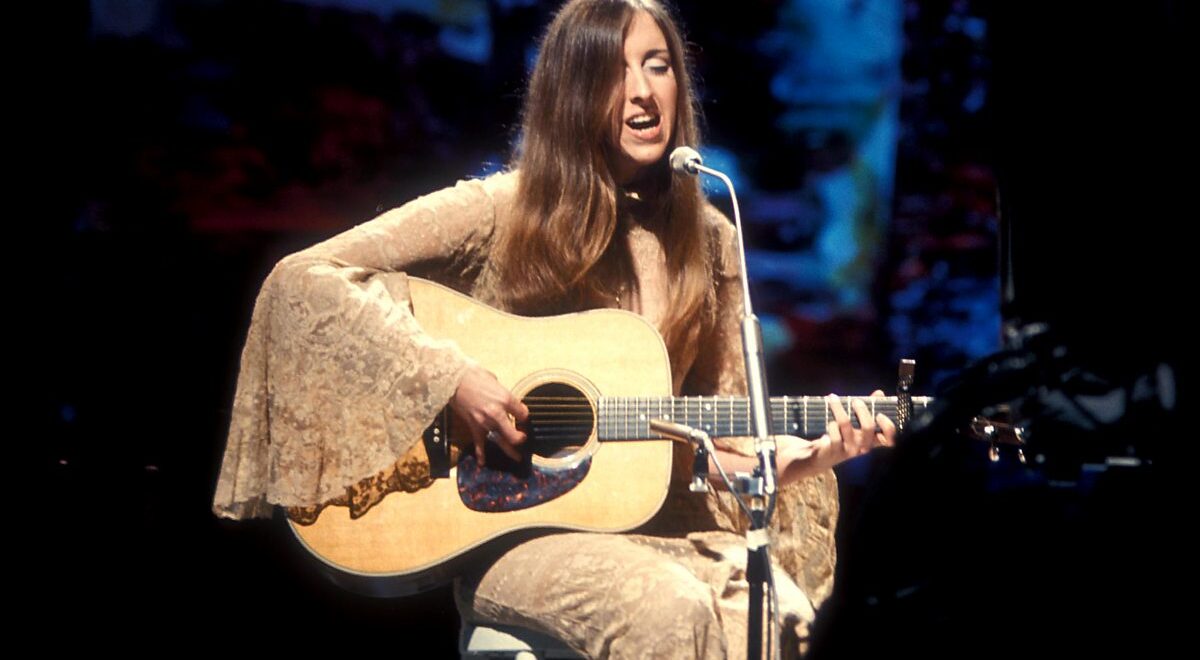10 Selects from Todd Rundgren pulled from a 1997 Japanese music research book on Todd Rundgren. I recently picked up a Japanese music book titled Todd Rundgren – […]
Fare Forward Voyagers: A Takoma Records Retrospective

Folk, blues, minimalism and beyond. Selections from John Fahey’s seminal Americana label Takoma Records.
It’s difficult not to think about Takoma Records without John Fahey’s name coming up. The wayward genius, who in the span of 50 years left a legacy of powerful fingerpicking, created an entirely new audience for solo steel-string guitar. His musical philosophy and compositional approach, which he called “American Primitive guitar,” was formulated based on his own idiosyncratic blues-based fingerpicking style — but mixed with unconventional harmonic and melodic additions and elements inspired by 20th century minimalist classical music and the traditional music of India.
While hugely influential in the realm of guitar playing, perhaps the biggest part of his legacy was the ground he broke supporting artists featured on his own Takoma Records. Named after the Washington D.C. suburb, Takoma Park, where Fahey spent his childhood, the label opened with a $300 investment to press 100 copies of his first album, Blind Joe Death.
As an ethnomusicology student at UCLA, Fahey was instrumental in rediscovering blues legends Skip James and Bukka White, and with Takoma he championed acolytes of the solo-guitar genre including Robbie Basho, Leo Kottke and Peter Lang. Takoma’s eclectic nature can be found in releases by electronics pioneer Bernie Krause, Brazilian guitar master Bola Sete, bluegrass musician Mike Auldridge — and even beat poet Charles Bukowski.
In that sense, Takoma represents Americana in its truest and most experimental form: deconstructing traditional elements in order to re-invent them as something newer and more progressive. With that spirit in mind, we look at ten selections from the Takoma Records catalog. They range from classics to unexpected surprises, drawn from a label that pushed the sonic dimensions and definitions of folk, blues, minimalism and beyond.

Bukka White – Mississippi Blues (1964)
Bukka White was among the earliest Delta blues recording artists, and was rediscovered in the ’60s by Fahey, who helped track him down and traveled to visit him personally. Mississippi Blues features several classic Delta blues performances, along with the distinctive steel guitar tones and dobro playing throughout, all tempered by Bukka’s rich but calm vocal style.

Robbie Basho – The Falconer’s Arm I (1967)
Intensely emotional, wildly eccentric and with a spiritual approach to guitar playing that featured esoteric tunings and a singular approach to varying folk traditions from across the world, Basho created monumental folk guitar pieces. The Falconer’s Arm I, from 1967, features dense guitar lines influenced by both blues and Indian music, evoking deeply reflective and meditative altered spiritual states somewhere between the earthly and divine.

Eddie “One String” Jones And Edward Hazelton – One String Blues (1968)
Essentially a field recording of two unknown street musicians playing the pure rural blues on Skid Row in Los Angeles, One String Blues features harmonica player “Poor Traveling” Edward Hazelton and Eddie “One String” Jones playing an instrument called a unitar. The instrument consisted of a crudely assembled piece of tinder with a single broom wire stretched across and a tin can mounted on the end. The unitar’s origins can be found in the diddley bow, a West African instrument, and Jones’ percussive use of the resonator and unconventional slide techniques are considered a link between American blues and West African music.

Leo Kottke – 6- and 12- String Guitar (1969)
Among the all-time best selling solo-acoustic guitar albums, Leo Kottke’s 6- and 12- String Guitar found an obvious home on Takoma, and was released in 1969 after Kottke sent a demo tape to the label’s Berkeley headquarters. A Fahey disciple, Kottke possesses a straightforward approach that shines, as does his astounding fingerpicking virtuosity. The album showcases both playful and reflective approaches to the steel strings, and as a result creates an accessibility that helped pave the way for commercial new age and instrumental music on labels such as Windham Hill, Narada and Higher Octave.

Homegas – Homegas (1969)
Obscured by the release of Leo Kottke’s ‘6- and 12-String Guitar,’ Homegas’ only album was produced by John Fahey. It’s a disarmingly authentic and heartfelt collection of original folk songs that’s full of backwoods charm — created by musicians from an Indiana-based rural commune.

John Fahey – Fare Forward Voyagers (Soldier’s Choice) (1973)
While Fahey warrants a full overview of his expansive career and shifting sound, 1973’s Fare Forward Voyagers (Soldier’s Choice) is a beautiful example of the ways in which his guitar virtuosity redefined the instrumental music experience. With a complex intensity, cinematic aesthetic and lush meditative passages, Fare Forward Voyagers is an intimate, hypnotic entry into Fahey’s muse that plays out like a contemporary classical piece while managing to retain the country blues influence that first sparked his interest. It also hints at the more experimental route he would take during his resurgence in the 90’s.

Peter Lang – The Thing At The Nursery Room Window (1973)
Another acoustic picker well situated on Fahey’s label, Peter Lang’s The Thing At The Nursery Room Window documents Lang’s distinctive brand of folk music, which incorporates elements of Appalachian music, country blues and bluegrass to create short, unpretentious guitar pieces.

Leo Kottke / Peter Lang / John Fahey – Leo Kottke, Peter Lang, & John Fahey (1974)
A great primer for those looking for a portal into the world of John Fahey, American Primitive and Takoma Records in general, this compilation features four songs apiece from Fahey, Kottke and Lang, all recorded specifically for the record.

Bola Sete – Ocean (1975)
Said to be Fahey’s favorite record from the Takoma catalog (and also one which he produced), Bola Sete’s 1975 album Ocean takes a Brazilian approach to the American Primitive style. Elements of bossa nova and classical guitar shimmer through the depths, with Sete’s dexterous finger picking on full display. But even deeper, the elusive Brazilian concept of “saudade” — a sort of melancholy longing and nostalgia — seems ever-present on the album, and can guide you toward a reflective, vast serenity.

Craig Leon – Nommos (1981)
The crown jewel of Takoma oddities comes from Craig Leon, who produced singles for the Ramones and Blondie and has credits on crucial albums by Suicide and Talking Heads. Leon’s 1981 debut, Nommos, seems like an outlier for the folk-leaning label, but you can hear that audacious influence with an almost primitive approach to electronic music: occasionally aggressive and anxious shifts and rhythms, with smooth edges, yet still lush with spiritual overtones.
In a way, maybe that isn’t too uncharacteristic of a label whose founder deconstructed roots music into something more experimental and transcendent himself.
For a further examination of the label, including artists not featured on this list, check out this great mix created by our friends at NTS: https://www.nts.live/shows/guests/episodes/takoma-records-18th-october-2020










